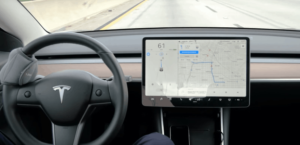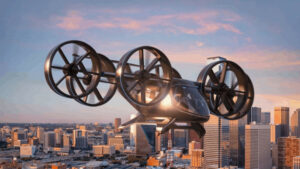Written by Doug Vining
Since the Jetsons cartoons of the 1960s, we’ve been waiting for that ultimate form of personal mobility, the Flying Car. The idea of being able to avoid traffic and obstacles, and simply zoom off to your destination on autopilot, captured our imagination for decades, and we all thought it was just a matter of time before this vision of the future became a reality.
Well, the future is here, so where are the flying cars?
The good news is that they’re in development, but they’re not cars. Well, the ones that fly aren’t cars, but we are getting self-driving cars that don’t fly. So, let’s dial back a bit, and start there.
For a while now, we’ve been promised cars that can drive themselves, park themselves, and can be summoned to collect you on demand. In technical terms, this is all possible, but in practical terms, in reality, it’s a bit messy. Google’s division Waymo has very advanced self-driving technology, but you can’t buy one. Major auto manufacturers like Ford, BMW, Mercedes, and Audi all have advanced capabilities but no commercial offerings. Tesla is leading the market with its all-electric vehicles with Autopilot, offering ‘Full Self Driving’ as an option, but you still have to keep your hand on the wheel from time to time, and be ready to take over at a moment’s notice.
Essentially, the technology is ahead of the regulations, and there’s also the simple matter of unpredictable situations. Although the sensors and intelligent systems are capable of safe driving under normal conditions, the computer can’t make judgement calls about driving on snow and ice or mounting the sidewalk to avoid an immovable obstacle. But you can take a road trip in a Tesla, and let the car drive itself about 85% of the time; and they’ll get better.

But a fully driverless car that acts like a robotaxi? Not any time soon, except in structured situations, like a campus shuttle bus.
That’s the promise implicit in any car-sized flying vehicle, that it can fly itself, which is what drones can do. So, the obvious model for a flying ‘car’ is a passenger drone, or air taxi. That’s where it’s heading, and there are at least 50 companies working on a variety of concepts and prototypes, some of which have actually flown short distances with one or two people on board.
The design challenges all center around payload, speed, noise, and range. Electric motors with multiple rotors are the answer for vertical take-off and landing, and reducing noise, but as long as you’re relying on batteries, payload and range become a problem. Adding wings and turbo-electric hybrid engines help with that, but contribute to noise levels.

Recently, in April 2020, the US Air Force has upped the ante by launching a program to accelerate the development of urban aerial vehicles, or ‘orbs’. Called ‘Agility Prime’, this support for the market sees successful operation of commercially developed orbs by 2023. A key player in the development of the supporting networks and infrastructure, rather than the vehicles themselves, is Uber, with their Elevate initiative. Uber sees electric air taxis as the way to extend rides into the third dimension, up into the air, for increased convenience and time-saving, which they call ‘productivity’.

And finally, let’s not ignore taking motorsport into the air. Airspeeder wants to reinvent racing around a course by putting it above the ground, like Formula 1, but airborne. It looks exciting, but daredevil stuff!
Whether you call them orbs or passenger drones or air taxis, these flying machines are redefining the future of urban mobility. The future starts now; let’s go!
Image credits: Tesla, Jaunt Air Mobility, Bell Nexus
- Articles